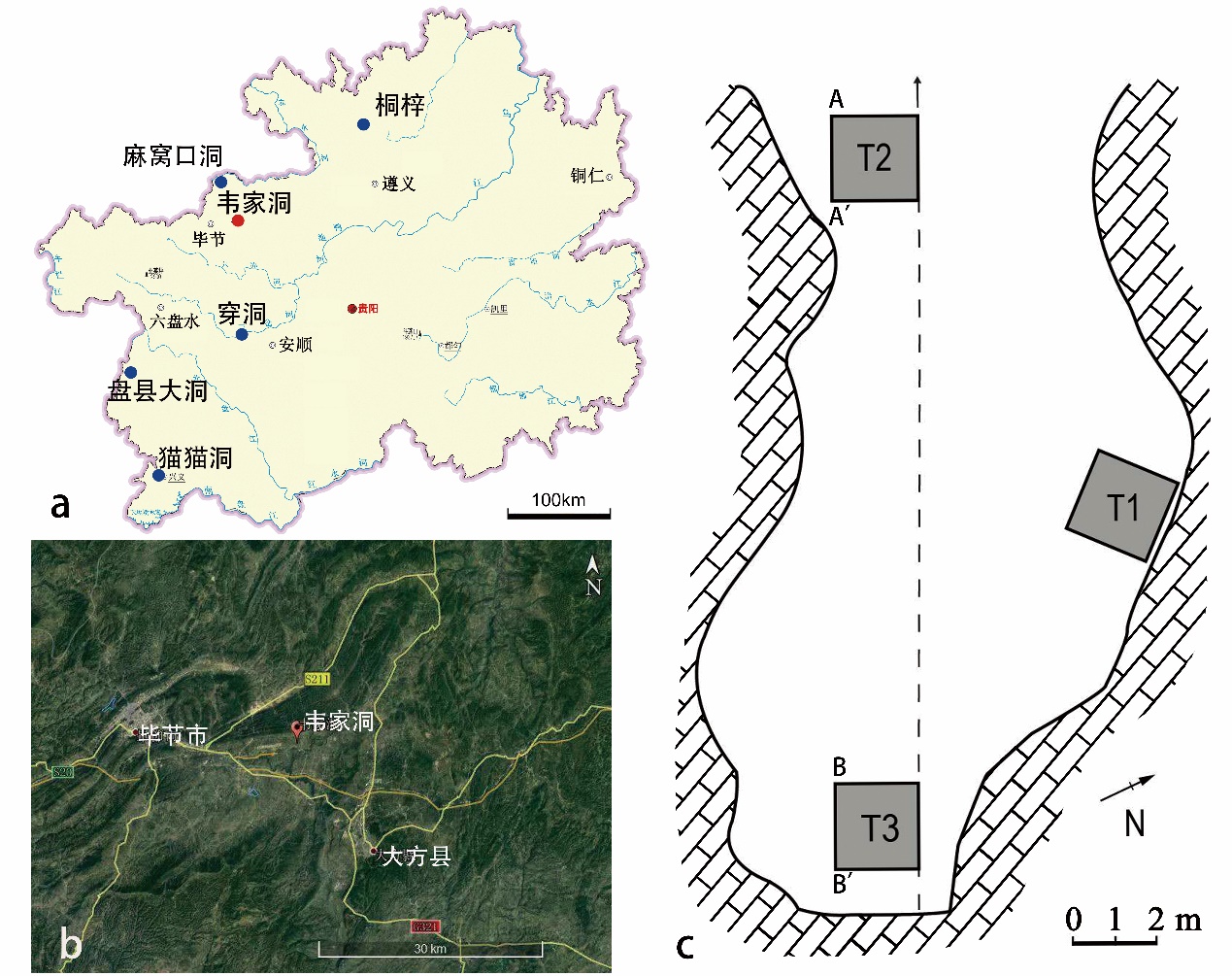| [1] |
赵凌霞, 蔡回阳, 王新金. 消息与动态:贵州大方响水发现石器时代遗址[J]. 人类学学报, 2007, 26(4):310
|
| [2] |
Guo L, Zhao LX, et al, A newly discovered late Pleistocene lower third premolar and the high frequency occurrence of Tomes’ root in the human fossil record from China[J]. Bulletin of the International Association for Paleodontology, 2019, 13(2):31-40
|
| [3] |
Smith BH. Patterns of molar wear in hunter-gatherers and agriculturalists[J]. American journal of physical anthropology, 1984, 63(1):39-56
pmid: 6422767
|
| [4] |
Vertucci F, Seelig A, Gillis R. Root canal morphology of the human maxillary second premolar[J]. Oral Surgery Oral Medicine & Oral Pathology, 1974, 38(3):456-464
|
| [5] |
Liao W, Xing S, Li D, et al. Mosaic dental morphology in a terminal Pleistocene hominin from Dushan Cave in southern China[J]. Scientific Reports, 2019, 9(1):1-14
|
| [6] |
王惠芸. 牙体解剖生理学[M]. 北京: 人民卫生出版社, 1958, 1-237
|
| [7] |
刘武, 吴秀杰, 邢松, 等. 中国古人类化石[M]. 北京: 科学出版社, 2014, 1-378
|
| [8] |
吴汝康, 贾兰坡. 周口店新发现的中国猿人化石[J]. 古生物学报, 1954(3): 3-24+84-90
|
| [9] |
Weidenreich F. The dentition of Sinanthropus pekinensis: a comparative odontography of the hominids[M]. Pehpei: The Geological Survey of China, Paleontology Sinica, New Series D 1, 1937, 1-180
|
| [10] |
吴汝康, 吴新智. 河南淅川的人类牙齿化石[J]. 古脊椎动物学报, 1982(1):1-9
|
| [11] |
吕遵谔, 孟振亚. 山东沂源猿人化石[J]. 人类学学报, 1989(4):301-313
|
| [12] |
吴汝康, 董兴仁. 湖北郧县猿人牙齿化石[J]. 古脊椎动物学报, 1980(2): 62-69+107
|
| [13] |
何嘉宁. 金牛山人化石牙齿初步研究[J]. 人类学学报, 2000, 19(3):216-225
|
| [14] |
Liu W, Martinón-Torres M, Cai Y, et al. The earliest unequivocally modern humans in southern China[J]. Nature, 2015, 526(7575):696
doi: 10.1038/nature15696
URL
|
| [15] |
Robinson JT. The Dentition of the Australopithecinae[M]. Pretoria: Transvaal Museum, 1956
|
| [16] |
Suwa G. A comparative analysis of hominid dental remains from the Sungura and Usno Formations, Omo Valley, Ethiopia[D]. Berkeley: University of California, 1990
|
| [17] |
Wood BA, Uytterschaut HT. Analysis of the dental morphology of Plio-Pleistocene hominids. III. Mandibular premolar crowns[J]. Journal of Anatomy, 1987, 154:121-156
pmid: 3128512
|
| [18] |
Xing S, Martinón-Torres M, Bermúdez de Castro JM, et al. Middle Pleistocene Hominin Teeth from Longtan Cave, Hexian, China[J]. PlOS ONE, 2014, 9(12):e114-265
|
| [19] |
Martinón-Torres M, Bermúdez de Castro JM, Gómez-Robles A, et al. Dental remains from Dmanisi (Republic of Georgia): Morphological analysis and comparative study[J]. Journal of Human Evolution, 2008, 55(2):249-273
doi: 10.1016/j.jhevol.2007.12.008
pmid: 18486183
|
| [20] |
Martinón-Torres M, Bermúdez de Castro JM, Gómez-Robles A, et al. Morphological description and comparison of the dental remains from Atapuerca-Sima de los Huesos site (Spain)[J]. Journal of Human Evolution, 2012, 62(1):7-58
doi: 10.1016/j.jhevol.2011.08.007
pmid: 22118969
|
| [21] |
Yousuke K, Kono RT, Thomas S, et al. Unique Dental Morphology of Homo floresiensis and Its Evolutionary Implications[J]. PlOS ONE, 2015, 10(11):e0141614
|
| [22] |
Xing S. Morphological variation of Zhoukoudian Homo erectus teeth[D]. Beijing: Chinese Academy of Science, 2012
|
| [23] |
Xing S, Sun C, Martinón-Torres M, et al. Hominin teeth from the Middle Pleistocene site of Yiyuan, Eastern China[J]. Journal of Human Evolution, 2016, 95:33-54
doi: 10.1016/j.jhevol.2016.03.004
URL
|
| [24] |
Johanson DC, White TD, Coppens Y. Dental remains from the Hadar formation, Ethiopia: 1974-1977 collections[J]. American Journal of Physical Anthropology, 1982
|
| [25] |
Ward CV, Leakey MG, Walker A. Morphology of Australopithecus anamensis from Kanapoi and Allia Bay, Kenya[J]. Journal of Human Evolution, 2001, 41(4):255-368
pmid: 11599925
|
| [26] |
Patte E. La dentition des Néanderthaliens[M]. Paris: Masson and Cie, 1962
|
| [27] |
Turner CG, Nichol CR, Scott GR. Scoring procedures for key morphological traits of the permanent dentition: The Arizona State University dental anthropology system[A]. In: MA Kelley, CS Larsen (Eds.). Advances in Dental Anthropology[M]. New York: Wiley-Liss, 1991: 13-31
|
| [28] |
Scott GR, Irish JD. Tooth Crown and Root Morphology: The Arizona State University Dental Anthropology System[M]. Cambridge: Cambridge University Press, 2017
|
| [29] |
Buchegger L. Variation of outer and inner crown morphology in upper premolars[D]. Wien: Universitat wien, 2015: 1-84
|
| [30] |
Bailey SE. Neandertal dental morphology: Implications for modern human origins[D]. Phoenix: Arizona State University, 2002, 1-238
|
| [31] |
Benazzi S, Viola B, Kullmer O, et al. A reassessment of the Neanderthal teeth from Taddeo cave (southern Italy)[J]. Journal of Human Evolution, 2011, 61, 377-387
doi: 10.1016/j.jhevol.2011.05.001
URL
|
| [32] |
Xing S, Martinón-Torres M, Bermúdez de Castro JM. The fossil teeth of the Peking Man[J]. Scientific Reports, 2018, 8(1):2066
doi: 10.1038/s41598-018-20432-y
URL
|
| [33] |
Hanihara T. Morphological variation of major human populations based on nonmetric dental traits[J]. American Journal of Physical Anthropology, 2008, 136:169-182
doi: 10.1002/(ISSN)1096-8644
URL
|
| [34] |
Reyes-Centeno H, Rathmann H, Hanihara T, et al. Testing modern human Out-of-Africa dispersal models using dental nonmetric data[J]. Current Anthropology, 2017, 58, 406-417
doi: 10.1086/694423
|
| [35] |
Adams DM, George RL. Fuzzy inference systems (FIS) as a novel approach to forensic ancestry estimation[A]. In: Proceedings of the American Academy of Forensic Sciences[C]. Seattle: American Academy of Forensic Sciences, 2018
|
| [36] |
Adams D, Swenson VM, Scott GR. Global Distribution of Marginal Accessory Tubercles of the Maxillary Premolars[J]. Dental Anthropology Journal, 2019, 32(1):8-15
doi: 10.26575/daj.v32i1
URL
|
| [37] |
Caliskan MK, Pehlivan Y, Sepetcioglu F, et al. Root canal morphology of human permanent teeth in a Turkish population[J]. Journal of Endodontics, 1995, 21(4):200-204
doi: 10.1016/S0099-2399(06)80566-2
URL
|
| [38] |
岳保利, 吴友农. 中国人恒牙及根管形态图谱[M]. 北京: 世界图书出版公司, 1995: 49-56
|
| [39] |
汪平, 王宇, 杨亚宁, 等. 离体上颌第二前磨牙根管和牙根情况的研究[J]. 现代口腔医学杂志, 2004, 18(6):562-563
|
| [40] |
商维荣, 李洪涛, 孟祥勇. 上颌第二前磨牙牙根及根管形态的观察[J]. 黑龙江医药科学, 2005, 28(2):32-33
|
| [41] |
王淑芳, 刘芳, 赵守亮. 广西地区693颗壮族人恒牙解剖形态测量[J]. 现代口腔医学杂志, 2009, 23(5):497-499
|
| [42] |
Kartal N, Ozcelik B, Cinilli H. Root canal morphology of maxillary premolars[J]. Journal of Endodontics, 1998, 24(6):417-419
pmid: 9693586
|
| [43] |
孔倩颖, 梁立中, 王广勇, 等. 颌前磨牙牙根及根管形态的锥形束CT研究[J]. 口腔疾病防治, 2020, 28(4):246-251
|







